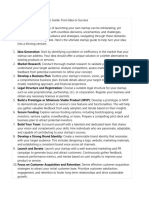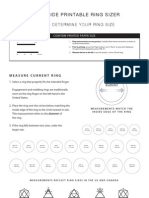0% found this document useful (0 votes)
56 views6 pagesAssignment
This comprehensive guide outlines the essential steps for starting a startup, from conceptualizing an idea to scaling the business. Key topics include assessing entrepreneurial skills, conducting market research, creating a business plan, securing funding, and effective marketing strategies. By following these steps, aspiring entrepreneurs can enhance their chances of success in a competitive market.
Uploaded by
muhammedaliulislamCopyright
© © All Rights Reserved
We take content rights seriously. If you suspect this is your content, claim it here.
Available Formats
Download as PDF, TXT or read online on Scribd
0% found this document useful (0 votes)
56 views6 pagesAssignment
This comprehensive guide outlines the essential steps for starting a startup, from conceptualizing an idea to scaling the business. Key topics include assessing entrepreneurial skills, conducting market research, creating a business plan, securing funding, and effective marketing strategies. By following these steps, aspiring entrepreneurs can enhance their chances of success in a competitive market.
Uploaded by
muhammedaliulislamCopyright
© © All Rights Reserved
We take content rights seriously. If you suspect this is your content, claim it here.
Available Formats
Download as PDF, TXT or read online on Scribd
/ 6























































































